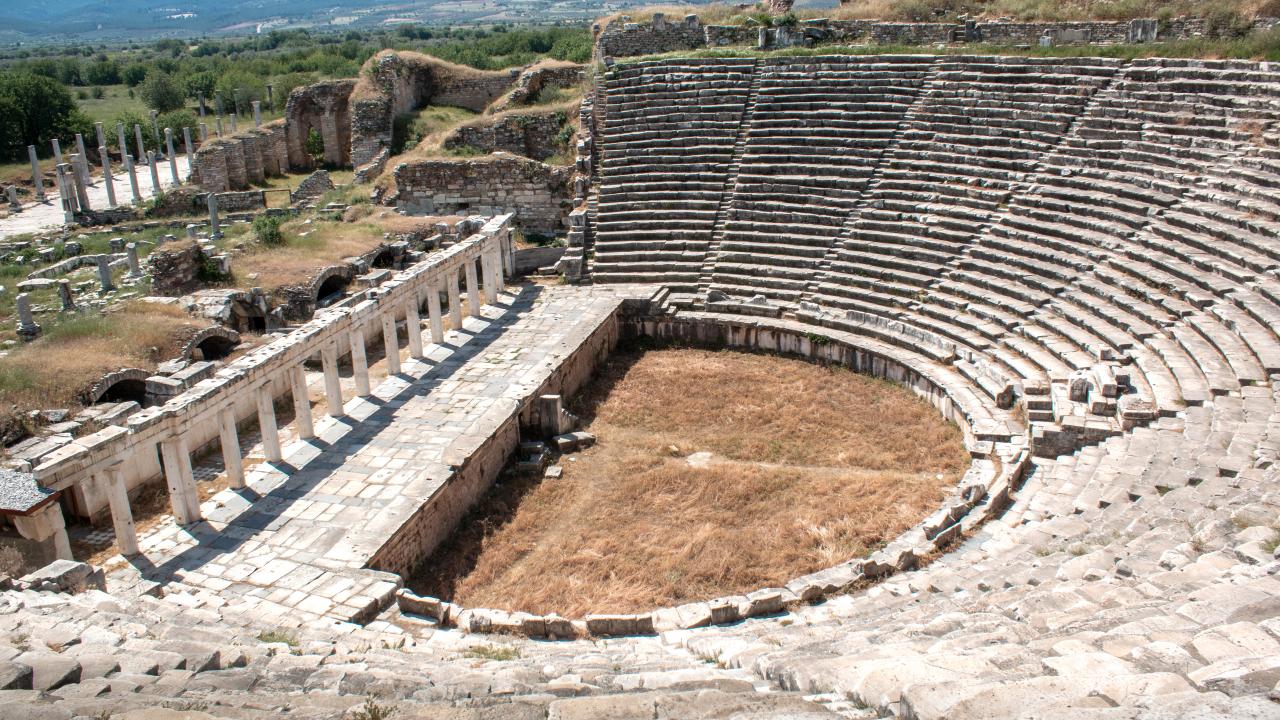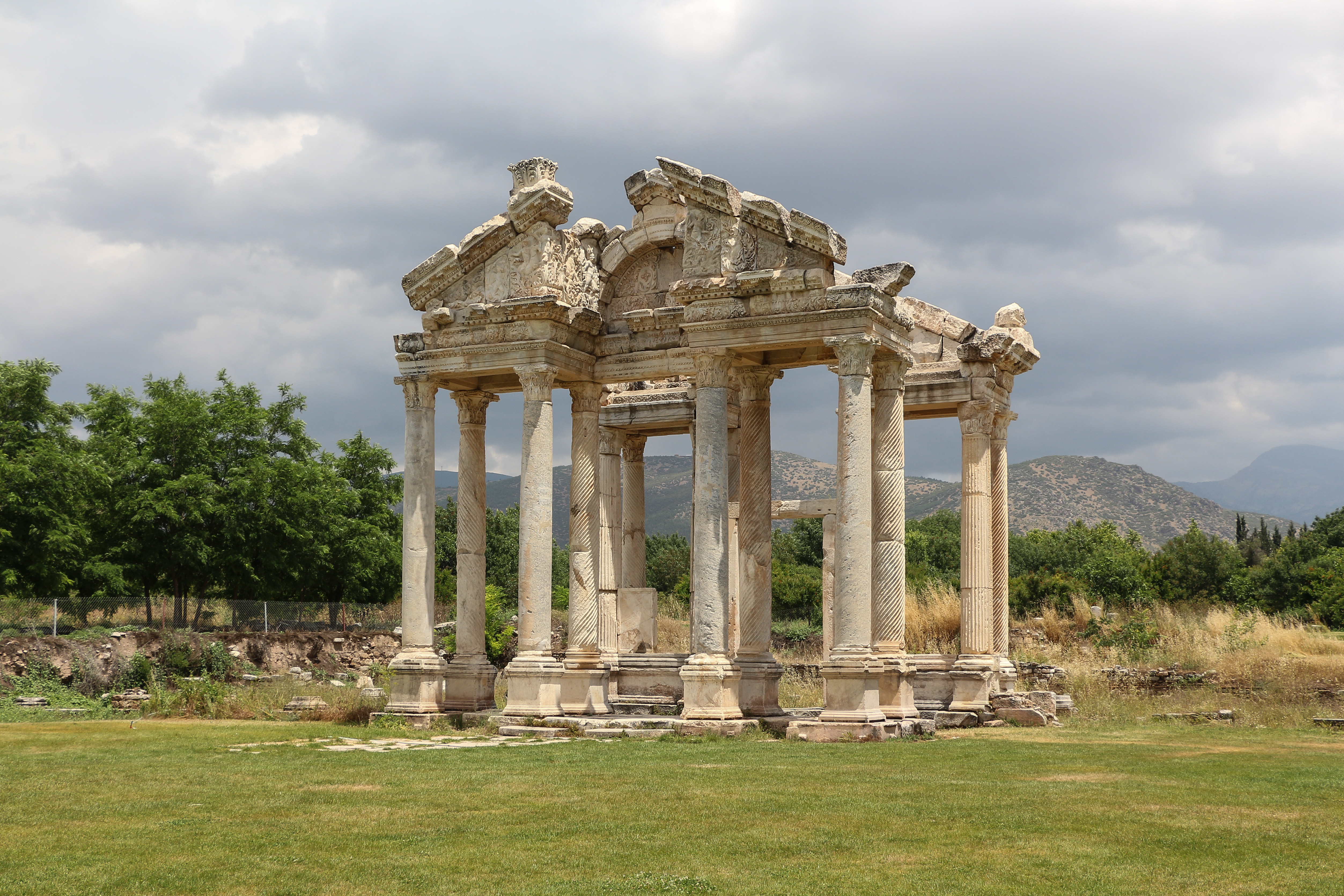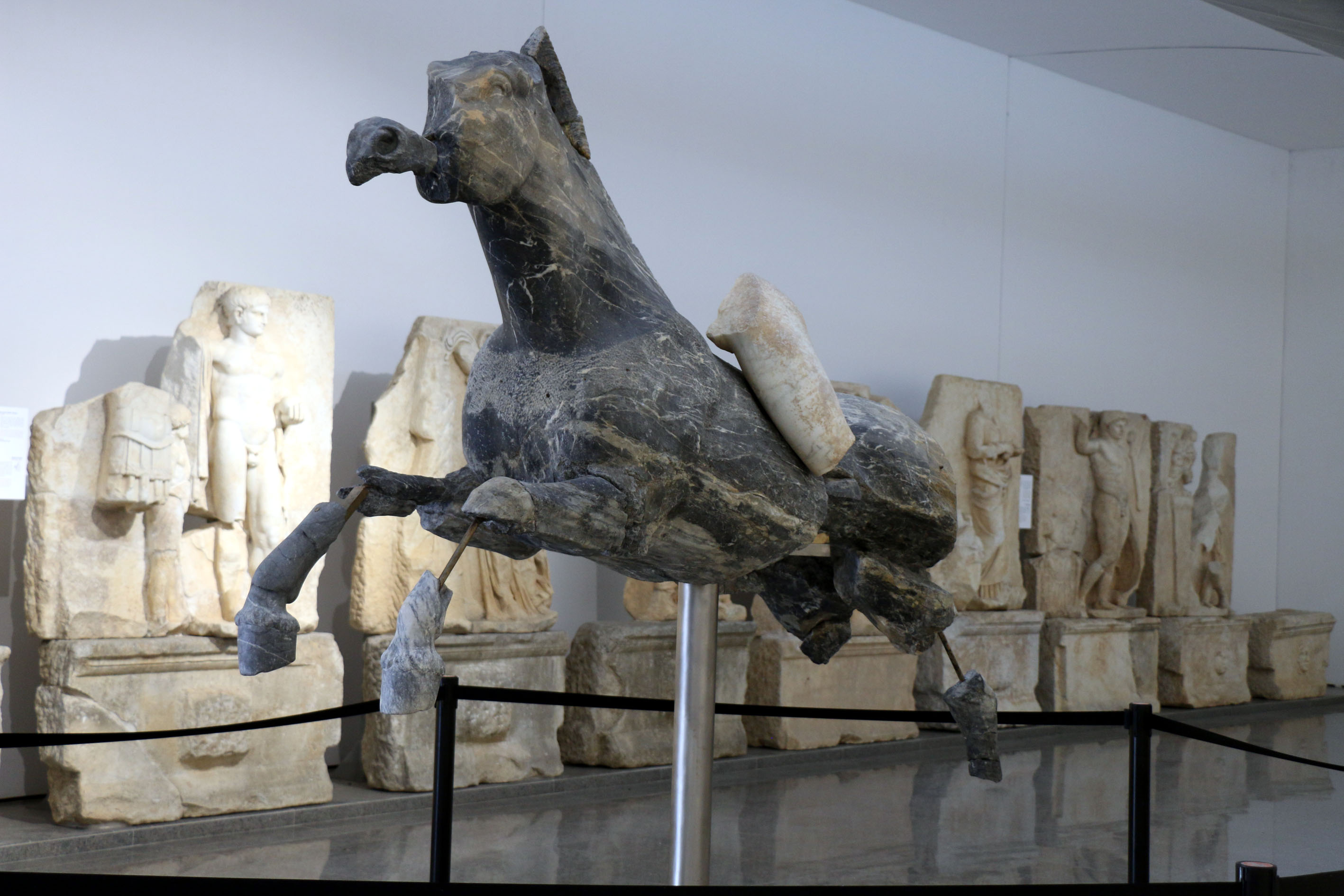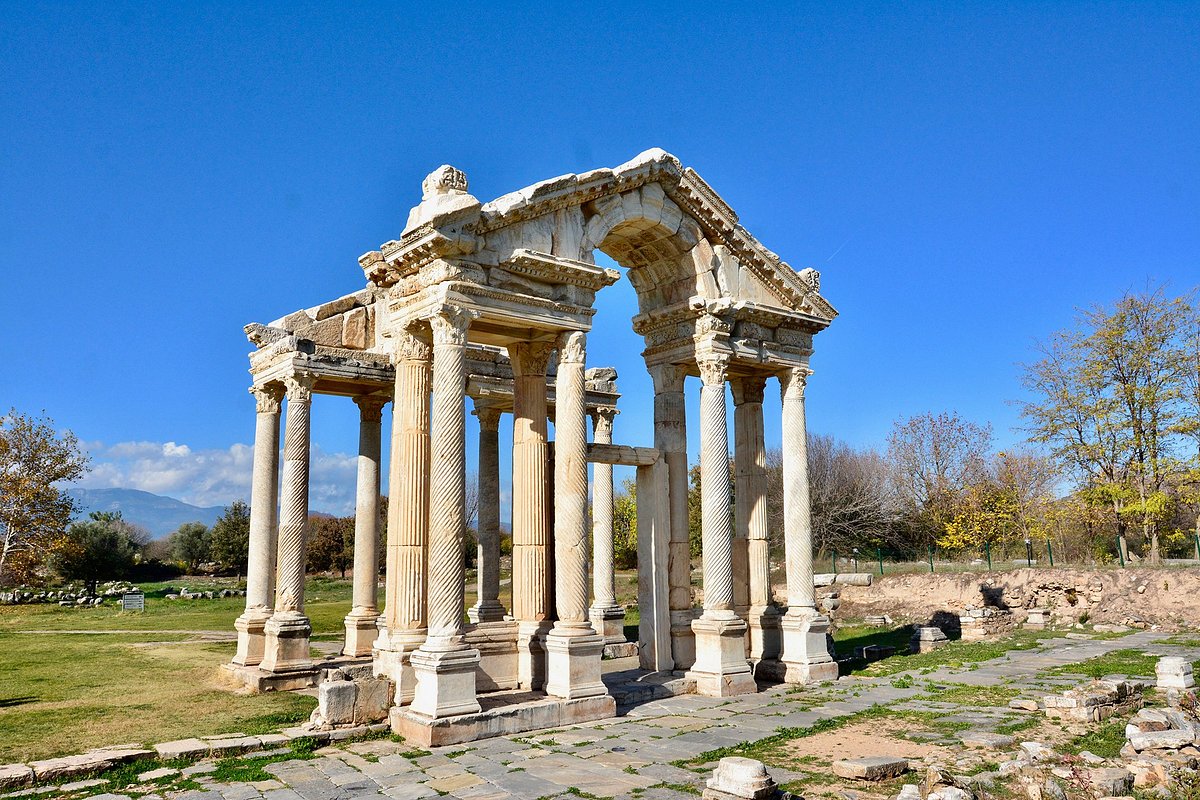What was it that so impressed the Roman Emperor Augustus that he declared, Of all the cities in Asia, I have chosen this one for myself? Have you ever imagined walking through a city where marble comes to life, where you can hear the whispers of art and aesthetics in its streets? This is that magical place, dedicated to the goddess of love and beauty, Aphrodite: Aphrodisias. If you feel lost among the ancient cities of the Aegean and wonder which one is truly 'worth seeing,' you are in the right place. In this guide, I will walk you through the most impressive stops on the list of things to do in the Ancient City of Aphrodisias. You won't just be looking at stones; you will listen to their stories and breathe the same air as the artists, gladiators, and emperors of thousands of years ago.
What sets Aphrodisias apart from other ancient cities is not just its excellent preservation. It was a perfect fusion of the Roman Empire's political power, the region's rich marble quarries, and an unparalleled level of artistic talent. The city, taken under the personal protection of Augustus, gained privileges such as tax exemption, allowing it to channel all its energy into art and architecture. That's why every corner of Aphrodisias is like an open-air museum. Let's take a journey back in time and discover the secrets of this marble capital together.
Take a Lap in the World's Best-Preserved Ancient Stadium
One of the first structures to astonish you upon entering Aphrodisias will be the stadium, with its colossal dimensions. Close your eyes and for a moment, imagine the roar of 30,000 people, the neighing of horses, the breathless struggle of the competitors. You are right at the center of that moment. At approximately 270 meters long, this structure is the largest and best-preserved stadium from the ancient world, and this alone is reason enough to visit Aphrodisias.
So what makes this stadium so special? Not just its size, but the logic behind it. The city's population at the time is estimated to be around 10,000-15,000 people. But the stadium had a capacity of 30,000, nearly three times the population. This shows us that Aphrodisias was not just a self-sufficient city but also a major attraction, a metropolis for the entire Carian region. People from surrounding cities flocked here to watch athletic competitions known as the Pythian games, festivals, and later, gladiator fights. The stadium was the city's economic engine and a symbol of its regional power.
Architecturally, it is also a work of genius. While ancient stadiums usually have one flat end, both ends of the stadium in Aphrodisias were designed with an elliptical curve. Thanks to this clever solution, you could see the entire competition area clearly, no matter where you sat on the track. In other words, user experience was considered even 2,000 years ago! This massive structure is living proof of why Aphrodisias is so special among the Ancient Cities of the Aegean Region. Every row of seats tells a different story.

Take Breathtaking Photos in Front of the Monumental Gate, the Tetrapylon
The postcard moment of your Aphrodisias trip will undoubtedly be in front of the Tetrapylon. This monumental gate, opening to the sacred sanctuary of Aphrodite, is so elegant and detailed that you will marvel at how marble can be carved like lace. This is not just a gate, but a gateway to heaven. Its name, meaning four gates in Greek, comes from its four groups of four columns facing four directions, presenting a complete visual feast.
The primary purpose of the Tetrapylon was not functional but purely aesthetic and ceremonial. It was a monument of prestige where the architects and sculptors of Aphrodisias displayed all their mastery, declaring the city's wealth and artistic power to friend and foe alike. The combined use of plain, fluted, and spiral-fluted columns, with some even made of striking blue marble, proves how special this monument was. The figures of Love (Eros) and Victory (Nike) emerging from acanthus leaves on the pediments whisper how fitting it is for the goddess to whom the city was dedicated.
One of the most poignant details of this gate is that during the Christian era, the figure of Aphrodite in the central arch was crudely erased and replaced with a cross. This is a sad, stone-etched trace of that great transformation when one belief ended and another began. But the story of the Tetrapylon doesn't end there. Through an incredible restoration effort completed in 1991, it was re-erected using 85% original pieces. As you stand before it today taking photos, you are witnessing not just an ancient gate, but a triumph of modern science and respect for history.

Marvel at the Masterpieces of the Sculpture School in the Aphrodisias Museum
So, what was the secret that made Aphrodisias the art capital of the ancient world? The answer lies hidden in the rich, high-quality marble quarries of the Salbakos (Babadağ) Mountains right next to the city. These pure white and blue-grey marbles were the lifeblood of the legendary Aphrodisias School of Sculpture, which existed for about 600 years, from the 1st century BC to the 5th century AD. The city's wealth and fame came from the skilled hands that carved this marble.
Visiting the Aphrodisias Museum is therefore a completely different experience. Because this museum is located on the very land where the artifacts belong, right inside the ancient city. This allows you to see the statues, sarcophagi, and reliefs in the atmosphere where they were created and displayed. This provides an invaluable context. In the museum, you will find lifelike portraits of emperors and nobles, dramatic scenes of mythological heroes like Achilles and Penthesilea, and of course, the unique cult statue of Aphrodite that defines the city's identity, combining the features of an Anatolian fertility goddess with the Greek goddess of beauty.
One of the most interesting sections of the museum is the area where unfinished sculptures are displayed. Here, you can see the artists' chisel marks and witness step-by-step how a figure was born from a block of marble. This is not just an exhibition; it is a testimony to the secrets of a 600-year-old workshop. The masters of Aphrodisias did not just copy Greek and Roman art; they created their own unique, dramatic, and realistic style, exporting their works to all corners of the empire, from Rome to North Africa. This experience in Aphrodisias places it at the top of the Türkiye's Best Ancient Museums list. Because here, art has not been torn from its soil.

Route Suggestions After Aphrodisias
As you leave Aphrodisias, you will take with you not only wonderful photos but also an understanding of aesthetics and history carved in marble. This city is not a place to be visited once and forgotten, but a source of inspiration to be returned to again and again.
Since you've come this far, how about enriching your trip a little more?
Karacasu: Just 13 km from the ancient city, you can visit the famous pottery workshops of Karacasu and try your hand at creating art. Meeting the modern representatives of a thousands-of-years-old tradition will be a wonderful experience.
Pamukkale (Hierapolis): With about an hour's drive, you can immerse yourself in the magic of the white travertine terraces and the Ancient City of Hierapolis. Combining the art of Aphrodisias with the nature of Pamukkale makes for an unforgettable Aegean tour.
Sırtlanini Cave: For those seeking nature and adventure, the Sırtlanini Cave near Karacasu, with its stalactites and stalagmites, could be an interesting alternative.
Frequently Asked Questions (FAQ)
1. How to get to the Ancient City of Aphrodisias? The easiest way to get there is by private car. While driving on the Aydın-Denizli highway, you need to turn towards Karacasu from the Kuyucak junction; signs will guide you to the ancient city. If you want to use public transport, you first need to get to Nazilli, then take the minibuses to Karacasu, and from Karacasu, take the minibuses to Geyre (the neighborhood where the ancient city is located). However, keep in mind that these services may be infrequent, especially in winter.
2. What are the visiting hours and entrance fee for Aphrodisias Ancient City? (2025 Estimate) Visiting information often changes depending on the season and official announcements. For the most up-to-date information, we recommend checking the official website of the T.C. Ministry of Culture and Tourism or calling the museum directorate (Tel: +90 256 448 80 86) before you go. The table below will give you a general idea.
| Category | Information | Notes |
|---|---|---|
| Visiting Hours (Summer) | Generally 08:00 - 19:00/20:00 | Check the official site for seasonal updates. |
| Visiting Hours (Winter) | Generally 08:30 - 17:30 | The ticket office usually closes half an hour earlier. |
| Entrance Fee | Varies | Be sure to check official sources for the current fee. |
| Museum Pass (Müze Kart) | Valid. | Entry is generally free with the Museum Pass. |
3. How much time should I set aside to visit Aphrodisias? To fully experience the spirit of the city, we recommend setting aside at least 3-4 hours. If you love taking photos and want to explore the museum in detail, this time can extend to half a day. Don't rush; the marbles have a lot to tell you.
Bibliography
To learn more academic information about the global importance of Aphrodisias and to read in detail why UNESCO has taken this unique heritage site under its protection, you can visit the official World Heritage List page:
Aphrodisias - UNESCO World Heritage Centre: https://whc.unesco.org/en/list/1519/


 English
English Türkçe
Türkçe